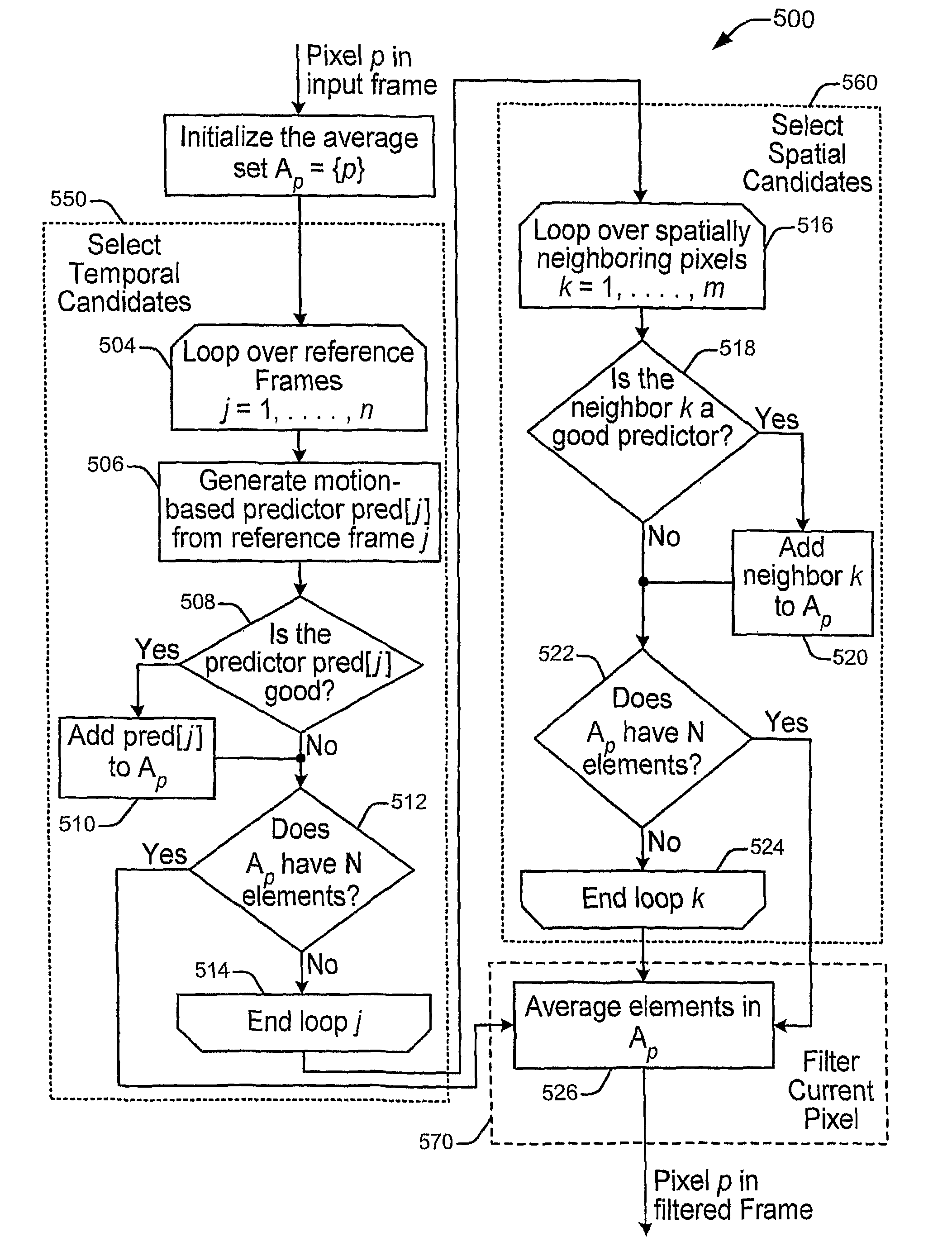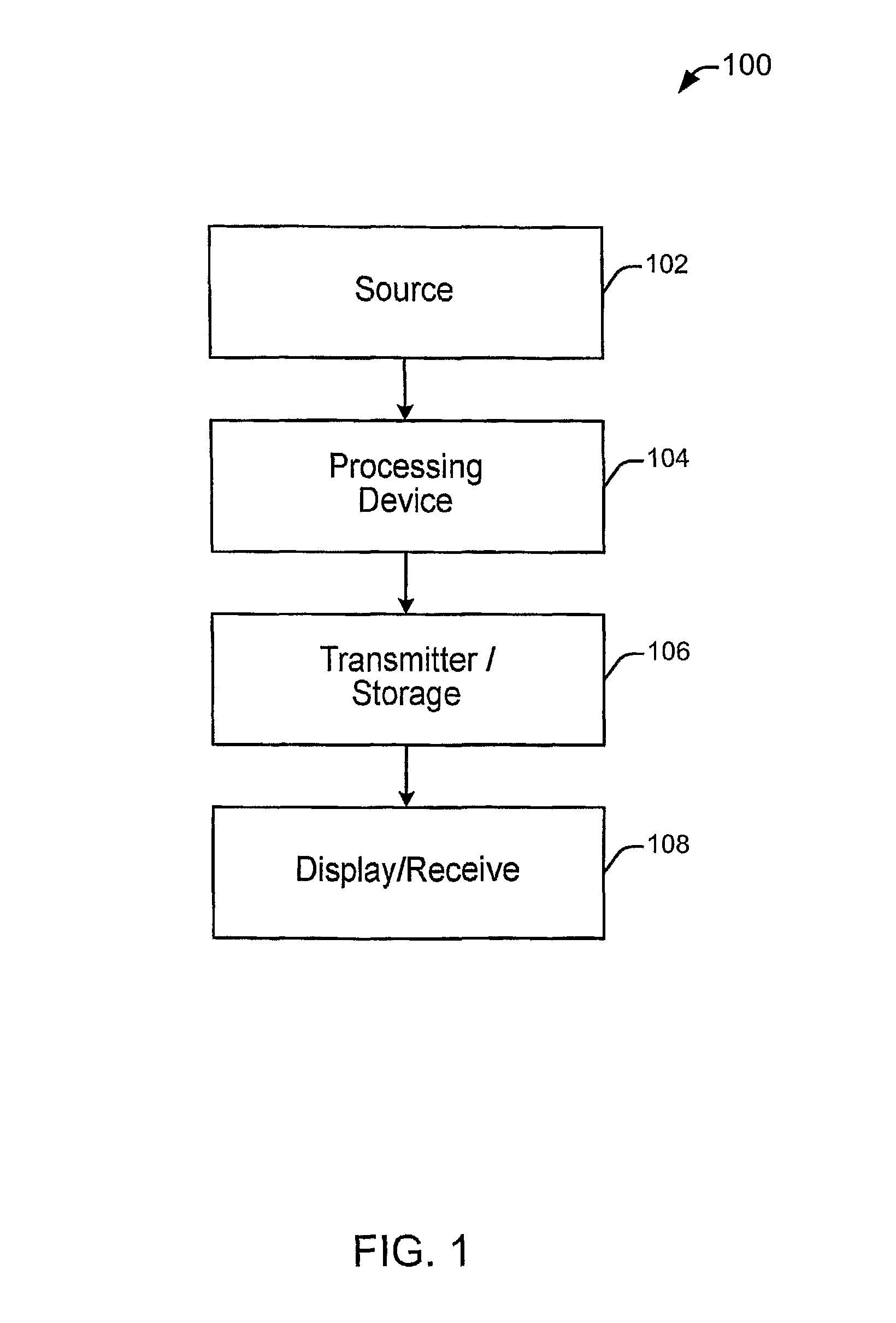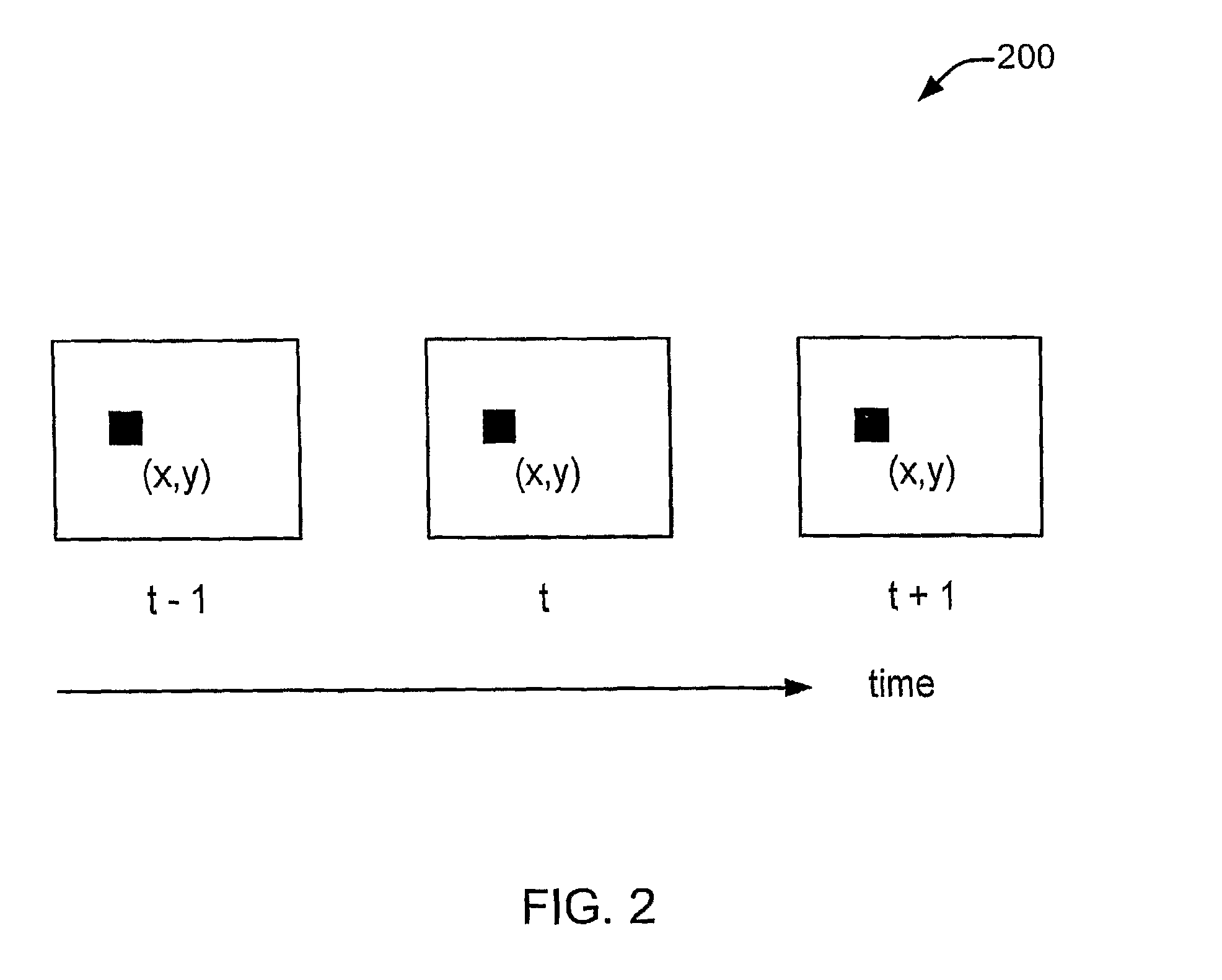Adaptive pixel-based filtering
a pixel-based filtering and adaptive technology, applied in the field of image filtering, can solve the problem of unfavorable noise removal of the pictur
- Summary
- Abstract
- Description
- Claims
- Application Information
AI Technical Summary
Benefits of technology
Problems solved by technology
Method used
Image
Examples
Embodiment Construction
[0015]One challenge is to create a video filtering method which addresses two major problems associated with video noise removal: (a) loss of detail in the content, and (b) filtering artifacts, that is, artifacts introduced by the filtering process such as uneven noise removal. The lack of interaction in prior art systems between spatial and temporal filtering at the pixel level causes the strength of the filtering to vary from pixel to pixel, thus leading to the possibility of post-filtering artifacts arising from uneven filtering.
[0016]An implementation addresses these problems by providing explicit interaction between spatial and temporal filtering. The explicit interaction is achieved by combining spatial and temporal filtering at the pixel level, while continuing to enforce an even amount of noise reduction across all pixels in a video and while keeping as much detail as possible. Each pixel is averaged with a constant number of temporally and spatially correlated pixels. Avera...
PUM
 Login to View More
Login to View More Abstract
Description
Claims
Application Information
 Login to View More
Login to View More - R&D
- Intellectual Property
- Life Sciences
- Materials
- Tech Scout
- Unparalleled Data Quality
- Higher Quality Content
- 60% Fewer Hallucinations
Browse by: Latest US Patents, China's latest patents, Technical Efficacy Thesaurus, Application Domain, Technology Topic, Popular Technical Reports.
© 2025 PatSnap. All rights reserved.Legal|Privacy policy|Modern Slavery Act Transparency Statement|Sitemap|About US| Contact US: help@patsnap.com



